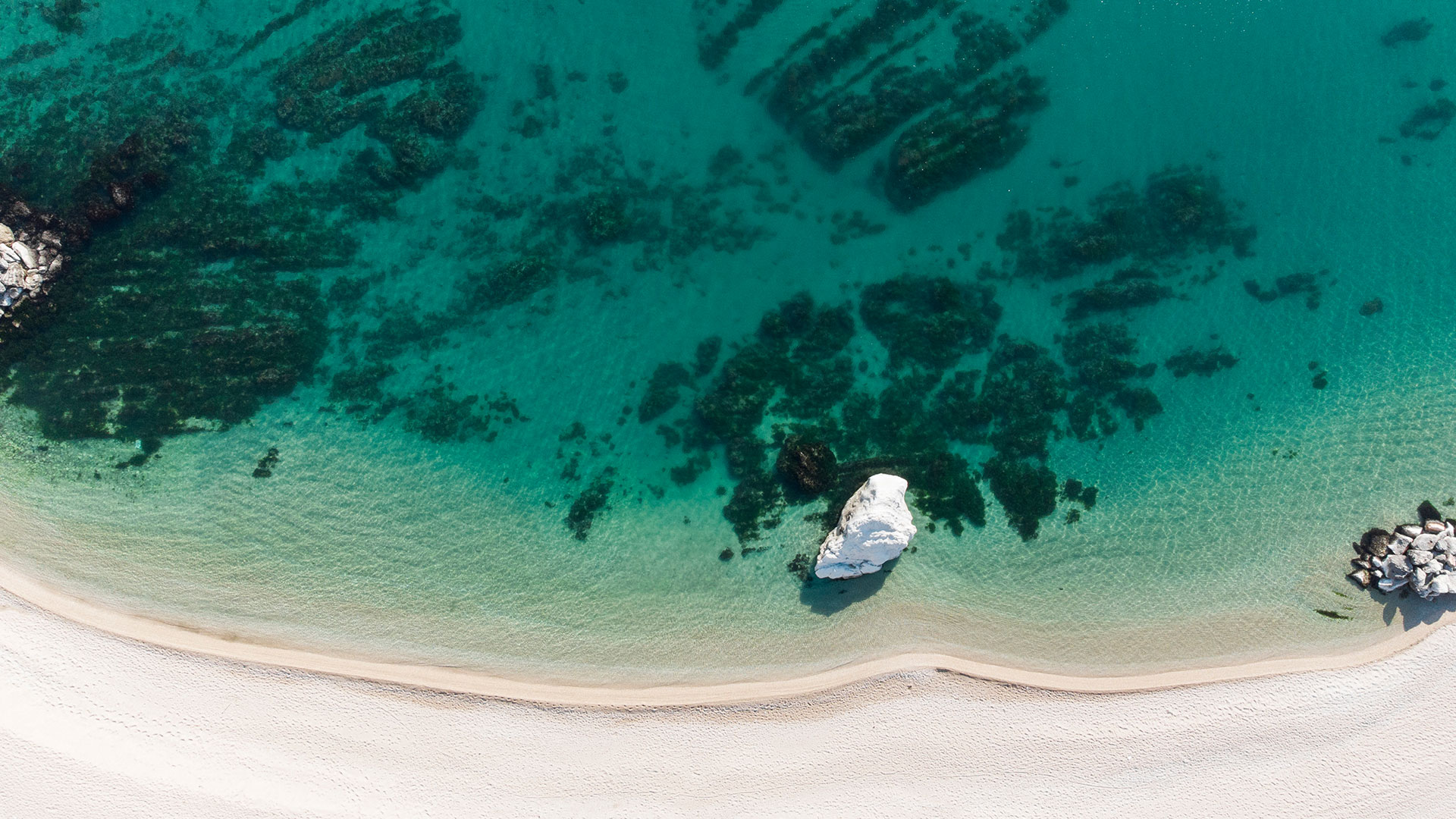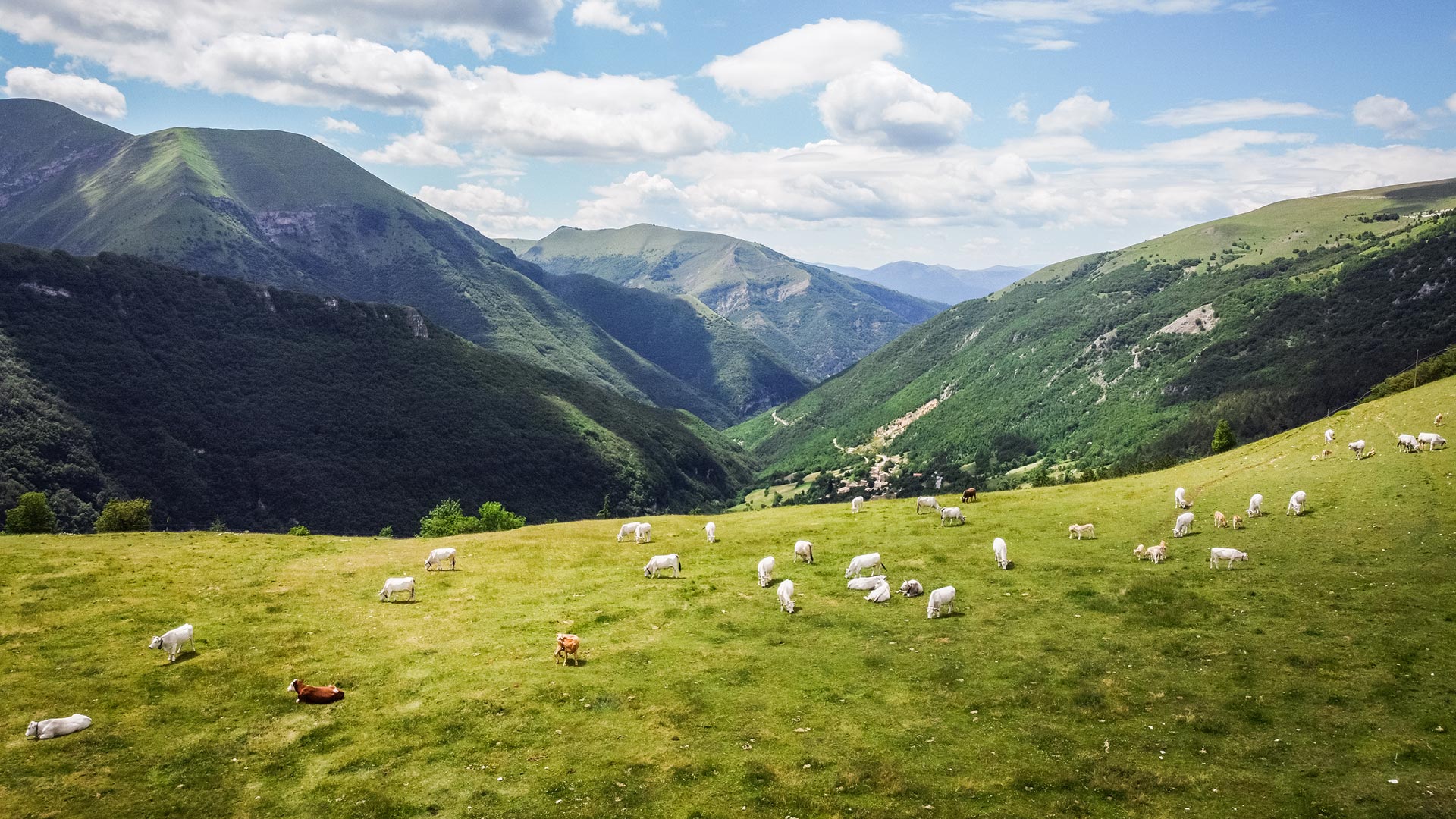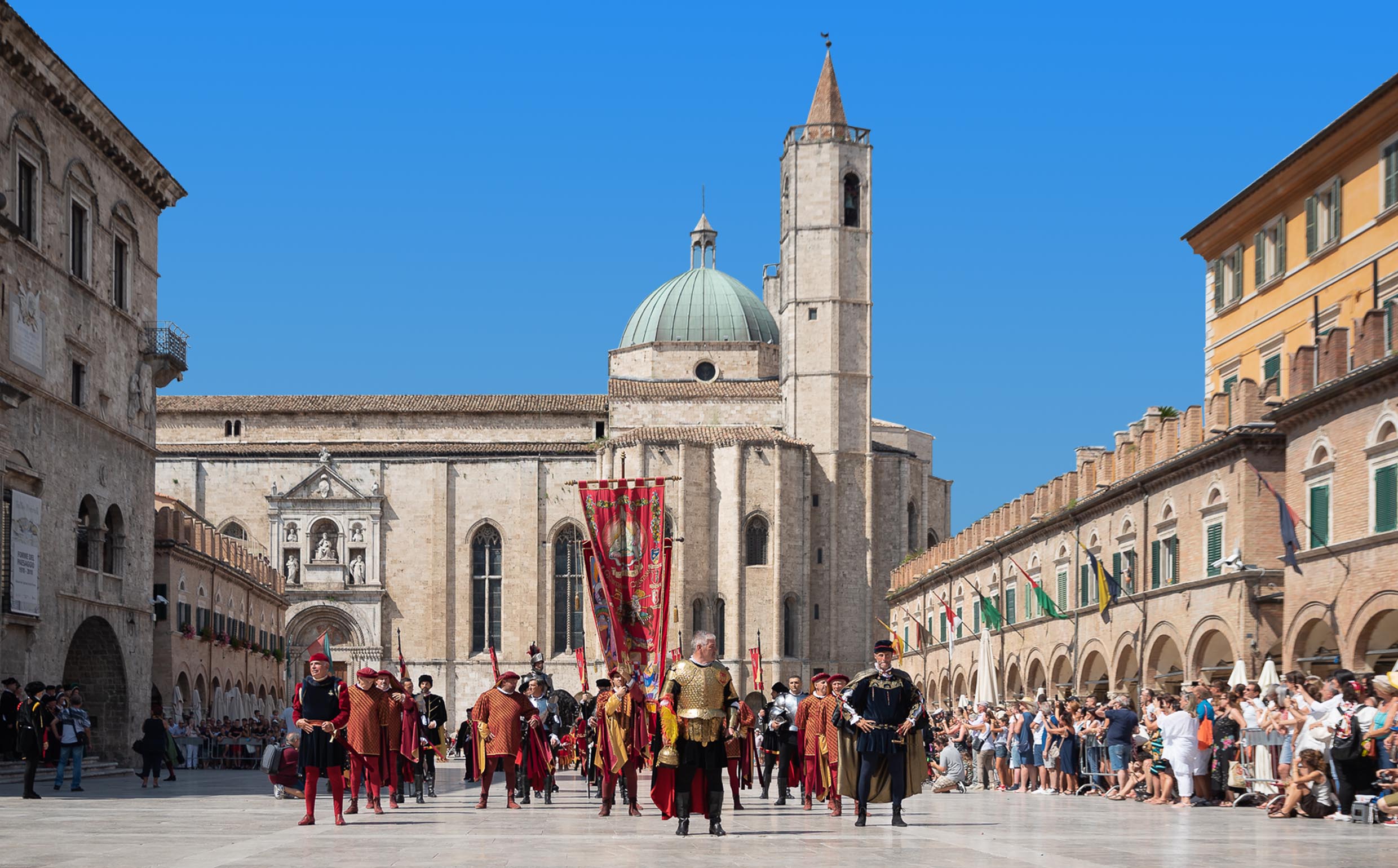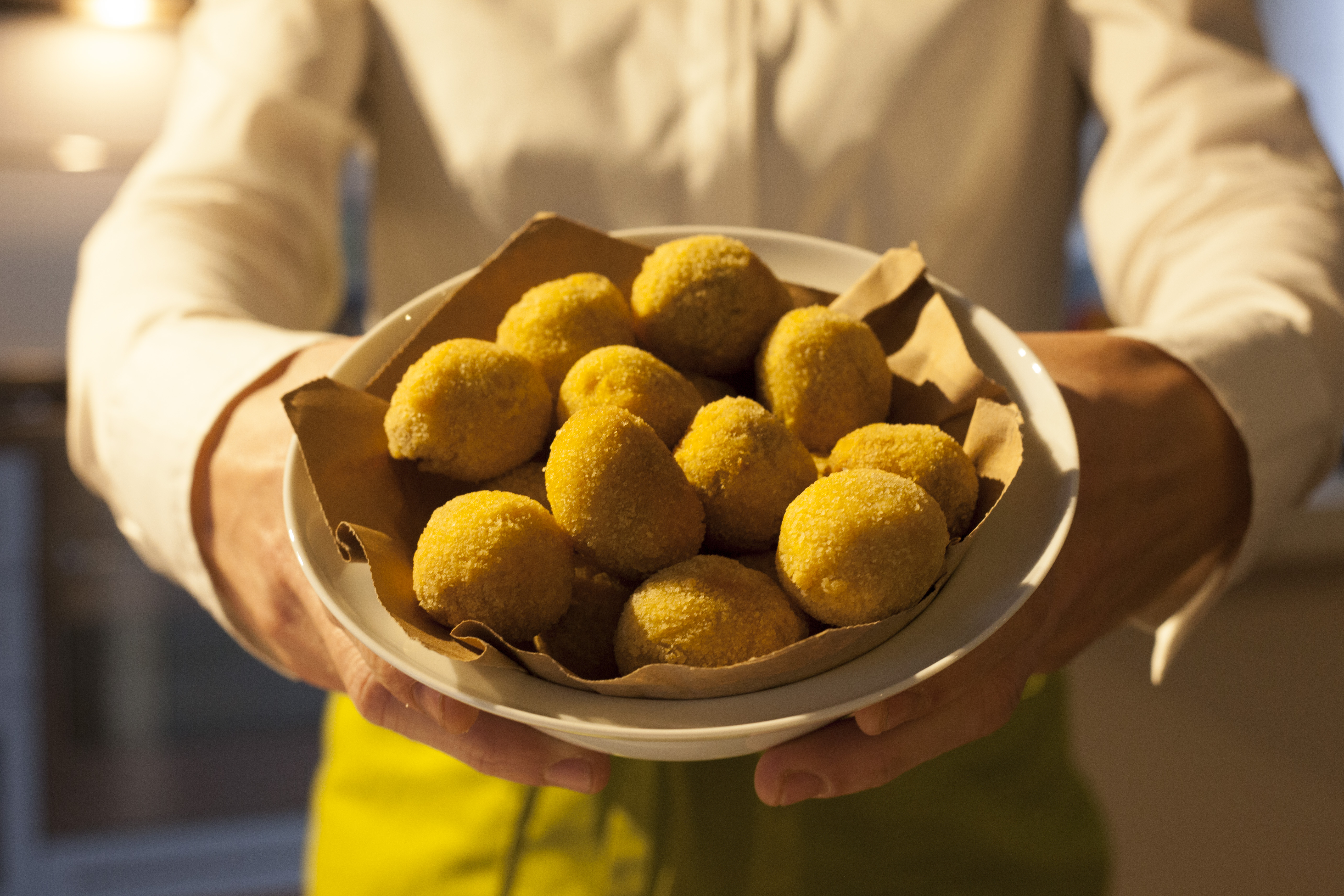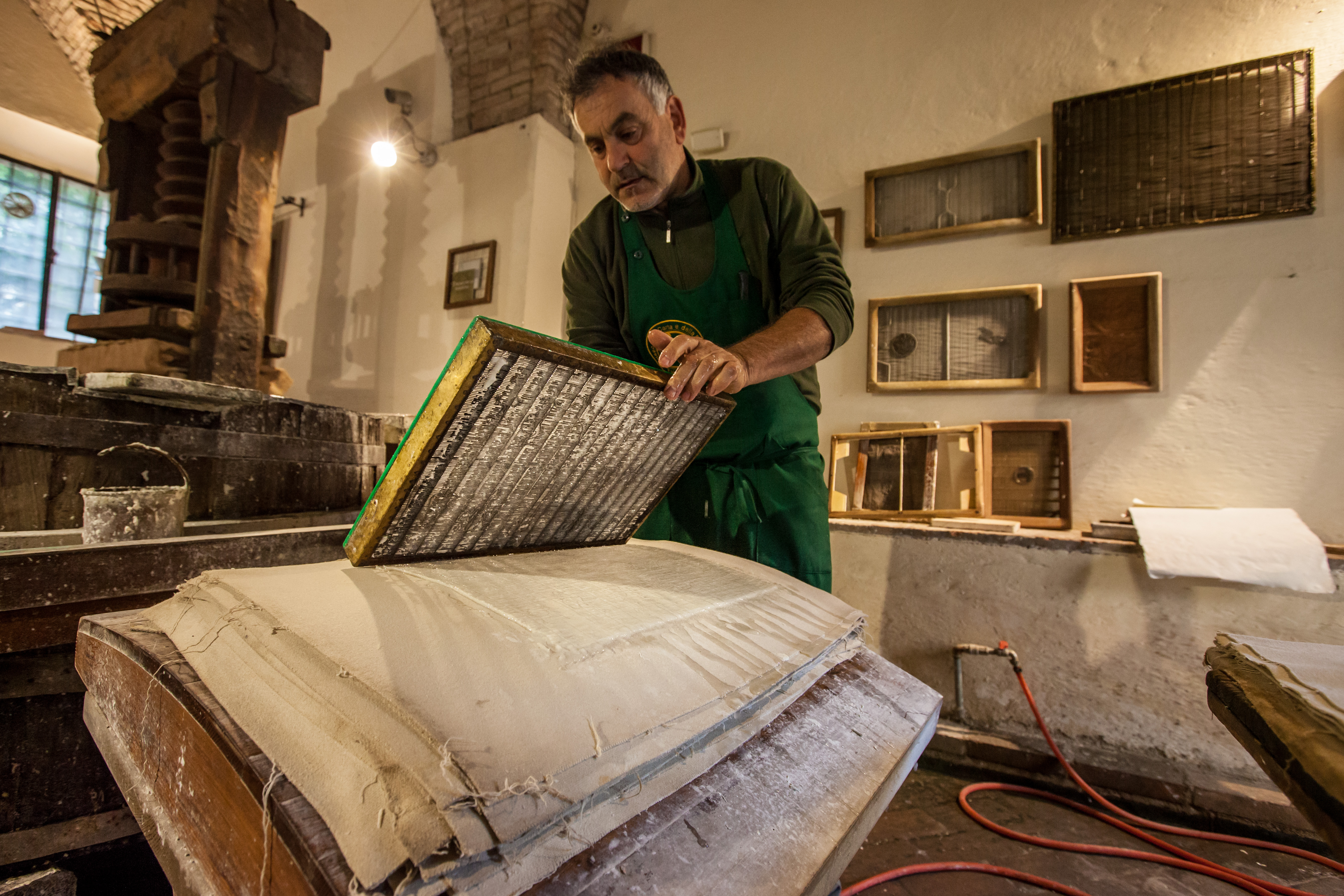Historic towns - Marche Tourism
The cultural heritage
In the Marche, the historic towns and cities – about a hundred, out of a total of 225 municipalities – are evidence of the cultural pluralism that has evolved over the centuries as a result of the fragmented historical development of the region. In the province of Pesaro and Urbino, the largest towns were at the height of their power in the Renaissance period: Fano and Gradara were governed by the Malatesta; Urbino was the scene of the humanist ambitions of Federico da Montefeltro; Pesaro, Urbania (formerly known as Castel Durante, it was famous for its production of maiolica), and Senigallia were ruled by the Della Rovere family.
The history of Ancona has always been closely linked to its port, the second in importance to Venice on the Italian side of the Adriatic. The old part of the city is dominated by the Romanesque cathedral of San Ciriaco, while important buildings bear witness to the city’s prosperity and growth in the 15th century. Just a few miles from Ancona, in the town of Loreto, there is one of the most visited sanctuaries in Italy, where the artists Melozzo da Forlì, Luca Signorelli, Bramante, Andrea Sansovino, and Lorenzo Lotto worked. Near Loreto is Osimo, a town of Roman origins.
Inland from Ancona is the Esino valley dominated by Jesi, with its ancient walls. Further up the valley, the city of Fabriano, world-famous for its paper production, has perfectly preserved its Medieval plan. In the province of Macerata is Camerino, which enjoyed a period of great economic and artistic importance in the 15th century under the Da Varano family. From Camerino, it is only a few miles to Tolentino, where the chapel of the Basilica of San Nicola contains some of the most outstanding frescoes by the 14th-century Riminese School. Nearby is the small town of San Severino Marche, which, in the 14th and 15th centuries, became one of the European centers of international Gothic style thanks to the brothers Lorenzo and Jacopo Salimbeni.
Macerata is rich in Renaissance, Baroque, and 18th-century architecture. Southwards is Fermo, an important Roman colony and flourishing medieval city. Still further south is Ripatransone, a small but delightful town, with numerous archaeological relics and historic buildings. A few miles away Offida, with its intact walls, still has a fortress and the splendid abbey of S. Maria della Rocca. In Ascoli Piceno, Roman remains and medieval buildings are travertine-clad, the local stone, and testify to the city’s glorious past, as does the Via Salaria, traces of which have survived, often blended with the medieval structures.
-
The land of the dukes
In the former Duchy of Urbino, ruled by the House of Montefeltro and from 1508 by the House of Della Rovere, there are various routes that allow the visitor to discover the places associated with the political and cultural history of the ducal family. Urbino, Pesaro, Urbania, Fossombrone, and Senigallia still have their ducal palaces. Cagli, Mondavio, and Sassocorvaro are on the route touring to the fortresses built to defend the duchy, largely rebuilt by the architect Francesco di Giorgio Martini for Federico da Montefeltro. The museums of Urbino, Pesaro, Urbania, and Fossombrone and religious buildings, such as the monastery of Montefiorentino, where there is the splendid 15th-century chapel of the Oliva family, and the collegiate church of Mercatello sul Metauro, contain works of art commissioned to satisfy the refined tastes of the dukes.
-
Carlo Crivelli
In the 15th century Ascoli Piceno had a distinguished citizen, the Venetian artist Carlo Crivelli, who, with his followers, executed superb paintings featuring the splendidly arrayed saints local in the areas around Fermo, Ascoli, and Macerata. From Ascoli Piceno, with its cathedral, Pinacoteca, and Museo diocesano, our search for Crivelli’s works takes us to ancient, unspoiled towns and villages such as Montefiore dell’Aso in the province of Ascoli Piceno, and Massa Fermana in the province of Fermo, continuing to Monte San Martino (church of S. Martino) and Corridonia (parish picture gallery), Macerata (civic picture gallery), and Ancona (civic picture gallery).




